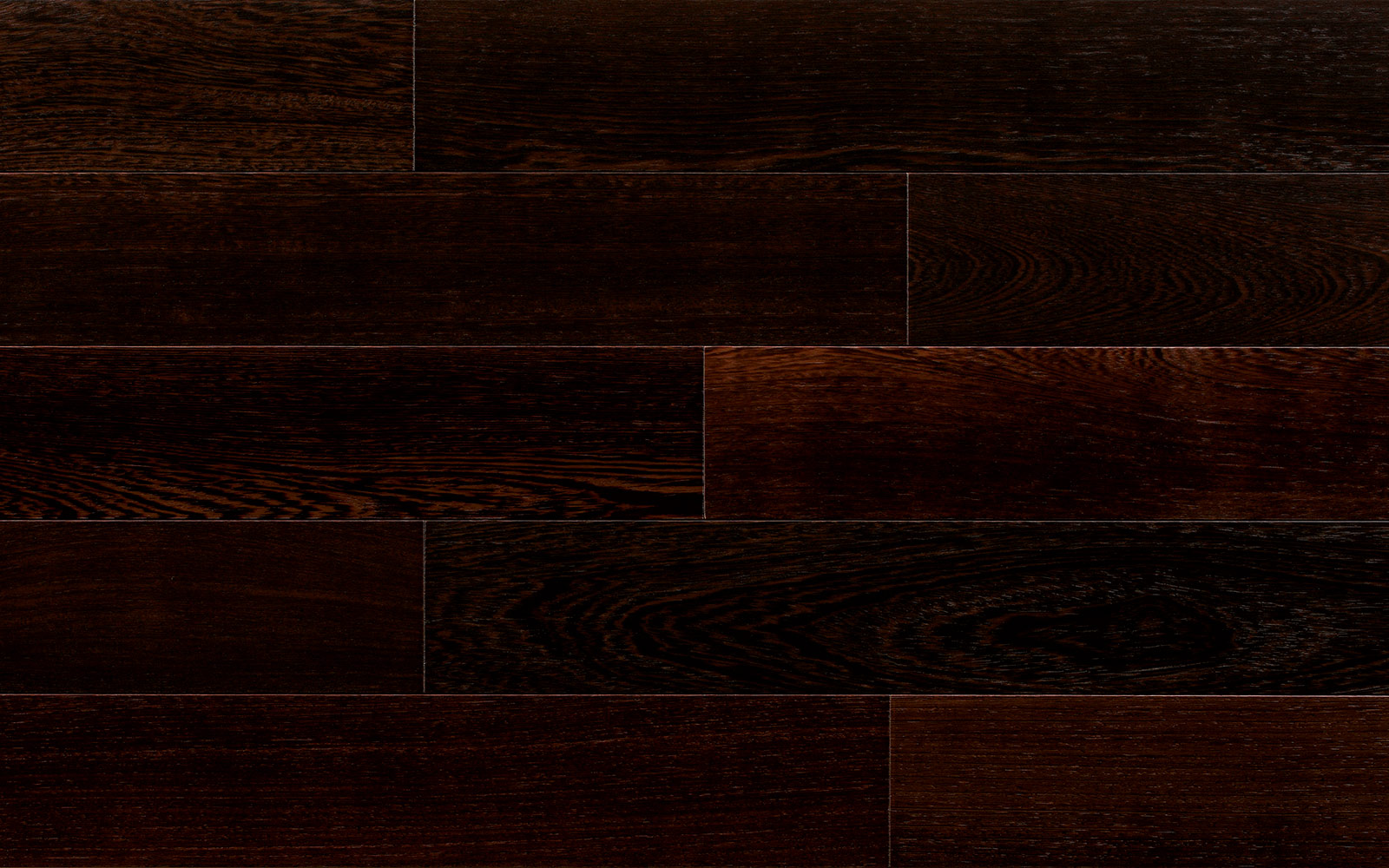Wengè flooring: origin of this wood type

Wengè is one of the most widely used essences for the construction of parquet; it is suitable for classic, rustic and modern environments. Its characteristics of hardness and compactness make this wood one of the most resistant, its dark colours allow you to obtain pieces for ancient and modern decorations. It has a dark brown colour, with medium grain and streaks tending to black and purple. This difference in colour is given by the different shades and sizes of the sapwood and heartwood. In fact, while the first can reach a width of about 3 centimetres and an almost white colour, the second can go from golden brown to dark brown with black veins. Any yellowish veins are due to the presence of minerals in the wood structure. Wengè wood is not very sensitive to seasoning and it can withstand humidity; in fact, it does not undergo a consistent shrinkage and it maintains its structure well over time. Due to its fibrous structure, wengè looks like a double-sided medal – in fact, if on the one hand it is not particularly easy to work, on the other, precisely because of this characteristic, it is suitable for the production of parquet, even those particularly exposed to traffic. Wengè wood is very heavy, with little shrinkage, extremely resistant to mechanical pressure and traction. Thanks to these characteristics, wengè shows remarkable durability qualities. Given its hardness, however, this wood can easily chip along the grain. Recently, wengè has been widely used not only in the production of parquet and wooden floors, but also in the creation of modern furniture and furnishings.
In addition to possessing a number of positive mechanical qualities, wengè is particularly appreciable in terms of aesthetics, since thanks to its variegated color, it can be combined with any type of environment, from classic to modern. Flooring with wengè parquet means making an optimal choice for two reasons: its particular durability and its singular beauty and versatility. The particularly dark coloring of wengè parquet is just one of the many reasons for using it in our homes. This parquet also possesses characteristics such as hardness and resistance to trampling, moisture and wear. The black shade of this wood from the land of Africa gives the parquet an intense and expressive character. Thanks to the warm nuances, it is able to combine equally with both ethnic and extravagant design solutions and with rooms with more contemporary and minimalist connotations. Wengè is aesthetically enhanced when it comes into contact with light. Repurposed in planking, it sees fibers and tones vary from plank to plank. Other colorations of this wood also exist in nature, with grains having lighter shades such as white and yellow. For those who adore parquet in their home environments, choosing wengè has no preclusions: whatever style you adopt, from classic to the more modern and contemporary, this parquet will make your home beautiful. Wengè is a compact wood with considerable hardness, an incredibly decorative, elegant, fine and refined parquet with a strong and lively character. It is very heavy and extremely resistant to wear and tear.
Recently, due to its excellent relationship between quality, price and performance, wengè is becoming one of the trendiest woods than ever, even in luxury spaces or in public places such as restaurants, pubs and hotels, but also for furnishings of private homes. Thanks to its particular characteristics of resistance, compactness and hardness and its structural and aesthetic characteristics, this wood type is used both as solid wood and veneer in the most different fields: parquet, fine carpentry, doors, windows, modern and luxury furniture, or even stairs, accessories and furnishing accessories, such as skirting boards, frames, shelves, musical instruments, bathroom furniture, kitchen furniture, sports equipment, modern structures where wengè is combined with aluminium. Wengè parquet stands out if placed together with light walls – here it can emerge in all its beauty between the furniture and the clarity of the perimeter. The favourite colours for the walls of a wengè-paved environment are the natural ones, such as beige, light grey or classic white, even if this parquet can be appreciated in combination with brighter colours. In any case, the rooms where there is a wengè parquet, whether rustic or elegant, will bestow that particular feeling of warmth and comfort, typical of a dark parquet. Another important factor to consider and which can affect the choice of wood for the parquet, is the need of not being excessively exposed to sun and light. In this respect, wengè parquet responds in an optimal way, so much so that it is one of the favourite wood types for outdoor areas. Being a versatile wood, it is suitable for various environments and rooms, thanks to its resistance to humidity. Not afraid of water, the choice for using it in bathrooms should not be neglected, especially when the size of the room is considerable.
The dark colour of wengè is perhaps its most interesting feature, but as such, it tends to attract dust and footprints, which can be easily removed with normal cleaning. For ordinary cleaning, it is recommended to use a well-wrung mop, with warm water and a proper cleanser, taking care to remove footprints and halos. It is better to follow the direction of the grain while using the mop. When necessary, a more accurate intervention can be carried out, in order to keep the parquet in excellent condition for longer, as well as to ensure an always sanitized environment. Furthermore, by passing a leather cloth over the surface, the parquet will always be as shiny as the first day.
Here you can find our range of parquet in Wengè related to this type of product
Write to us for more information
Fill out the form adding your request and we will contact you as soon as possible.

